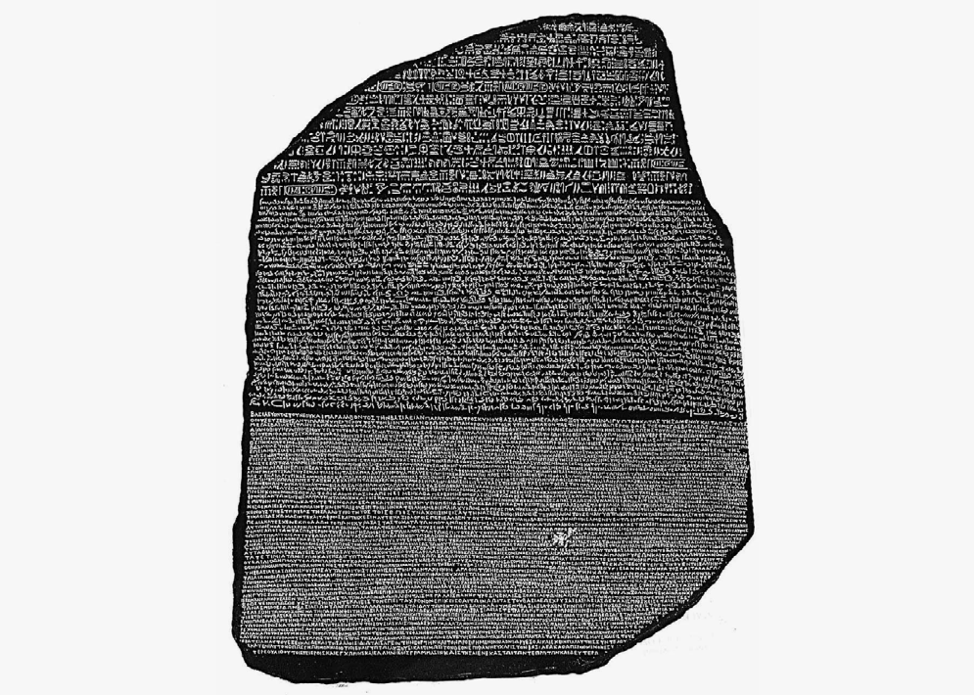Is Pictionary the Modern-Day Rosetta Stone?
- Brianna Dresbach
- Mar 2, 2019
- 3 min read
Updated: Mar 27, 2019
Its family night. You've played Uno last week, bingo the week before, and monopoly more times than you can count. Bad news: there are no board games left in the house. Good news: mom has a model Rosetta stone from her trip to Egypt.
Although the two are thousands of years apart, the pictographic drawings scribbled from most Pictionary game players have been said to contain the same properties as the Rosetta stone. So, fear not, if your family gets tired of the same old board games, you can surprise them by whipping out the Rosetta stone.

Pictionary is a board game that was created in 1985. The game consists of a board with multiple squares identifying a certain type of picture to be drawn. When it's their turn the player will choose a card out of a deck and will do their best to draw their best representation of the word on their card, in a manner that enables the other players on their team to guess that word.

In short, this manner of gameplay could really be seen as translation. Depending on the player, the images drawn in a representation of the word could be seen as a form of the visual language systems that emerged around 3000 BCE. Again, depending on each player, these images could even resemble hieroglyphs like those inscribed on the Rosetta stone. When an image is drawn in Pictionary, it is taken from the word on the card, hence translated from the alphabetic form of language to the visual one. The symbol is then interpreted by the team members in the group, so again, translated, but to a verbal language instead.
This resembles the aspects of the Rosetta stone. Elizabeth Nix, a writer for the History Channel's website, states that the Rosetta stone "helped scholars at long last crack the code of hieroglyphics, the ancient Egyptian writing system". There are three translations written on the stone. The first was hieroglyphics. This script was used for important or religious documents. Next was is demotic, the common script of Egypt during that period, and finally Greek, the language of the Egyptian rulers of the time.

Of course, Pictionary is not in any of the languages on the Rosetta stone, unless your pictures happen to look hieroglyphic, or you create a Greek version of the game, however, the basis of translation between visual and alphabetical language still remains.
There is, of course, the blatant difference of context between the two.
Pictionary, as previously stated, is simply a board game --and now in the digital era-- an app to play against friends as well.
The Rosetta stone, on the other hand, originated in Egypt was a list of accomplishments the pharaoh had achieved for his people and was written by a group of priests.
In the end, however, the main factor to remember is that both the Rosetta stone and pictionary serve as tools of translation and a vernacular for the people of each era. So the next time you do have family game night, you can impress your family by requesting the Rosetta stone for the night's entertainment.
Sources:
Etermax. Pictionary™, pictionary.etermax.com/en/home/.
Nix, Elizabeth. “What Is the Rosetta Stone?” History.com, A&E Television Networks, 1 Apr. 2015, www.history.com/news/what-is-the-rosetta-stone.
Paige. “Pictionary.” The Game Gal, 10 Sept. 2018, www.thegamegal.com/2010/11/06/pictionary/.
“Pictionary® Board Game.” Mattel Shop, shop.mattel.com/shop/en-us/ms/mattel-games/pictionary-board-game-bjm16.
“The Rosetta Stone.” The British Museum, www.ancientegypt.co.uk/writing/rosetta.html.
Woodland, Kevin. “Early Alphabets.” Graphic Design History. kevinwoodland.squarespace.com/early-alphabets.



Comments